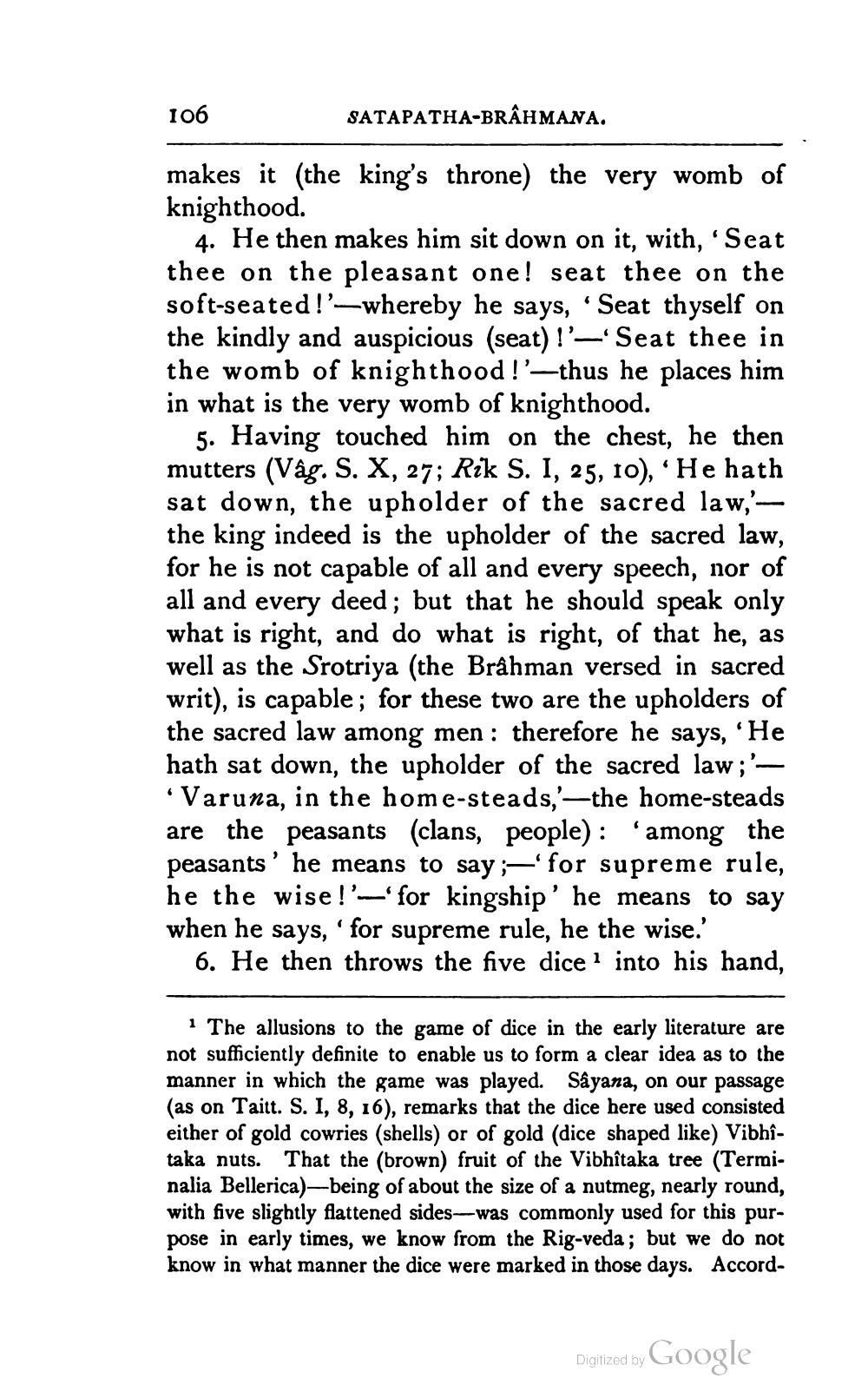________________
SATAPATHA-BRAHMANA.
makes it (the king's throne) the very womb of knighthood.
4. He then makes him sit down on it, with, 'Seat thee on the pleasant one! seat thee on the soft-seated!'-whereby he says, 'Seat thyself on the kindly and auspicious (seat)!'-'Seat thee in the womb of knighthood!'-thus he places him in what is the very womb of knighthood.
5. Having touched him on the chest, he then mutters (Vâg. S. X, 27; Rik S. I, 25, 10), 'He hath sat down, the upholder of the sacred law,'the king indeed is the upholder of the sacred law, for he is not capable of all and every speech, nor of all and every deed; but that he should speak only what is right, and do what is right, of that he, as well as the Srotriya (the Brâhman versed in sacred writ), is capable; for these two are the upholders of the sacred law among men: therefore he says, 'He hath sat down, the upholder of the sacred law;''Varuna, in the home-steads,'-the home-steads are the peasants (clans, people) : among the peasants' he means to say;-'for supreme rule, he the wise!'-'for kingship' he means to say when he says, 'for supreme rule, he the wise.'
6. He then throws the five dice into his hand,
106
1 The allusions to the game of dice in the early literature are not sufficiently definite to enable us to form a clear idea as to the manner in which the game was played. Sâyana, on our passage (as on Taitt. S. I, 8, 16), remarks that the dice here used consisted either of gold cowries (shells) or of gold (dice shaped like) Vibhîtaka nuts. That the (brown) fruit of the Vibhîtaka tree (Terminalia Bellerica)-being of about the size of a nutmeg, nearly round, with five slightly flattened sides-was commonly used for this purpose in early times, we know from the Rig-veda; but we do not know in what manner the dice were marked in those days. Accord
Digitized by
Google




